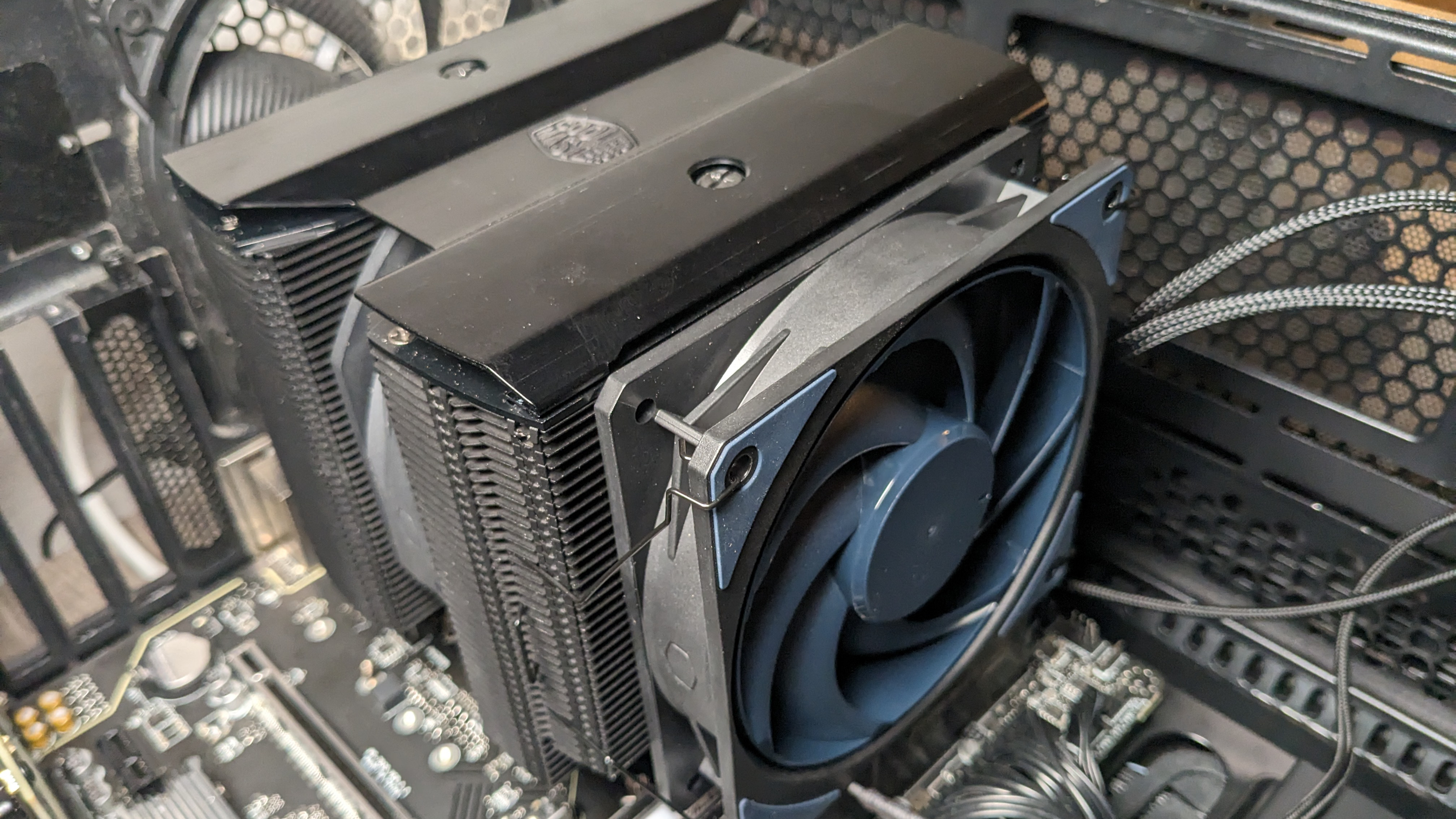
Cooler Master’s influence in the realm of PC cooling is undeniable. Well known for products like the classic Hyper 212 Evo air cooler and its giant HAF series of PC cases amongst other offerings, the company has recently been expanding its offerings even further, with its MasterHub modular Stream Deck competitor impressing us at Computex recently.
I was also impressed when I demoed the company’s Cooling X pre-built system at CES, an interesting fanless pre-built computer, that features a 7950X3D and RTX 4080 in a unique liquid loop, which utilizes the computer case to act as a giant heatsink to cool the components effectively without fans.
Next month, Cooler Master will also be launching its new MasterControl software which will offer control of cooling and other hardware via an open API. Today though, we’re looking at Cooler Master’s latest air cooler, the MA824 Stealth. The company is clearly aiming for air cooling supremacy here. The Stealth a formidable challenger that features 8 heatpipes of varying widths, upgraded fans, and a supremely simple installation process. But is that enough to outmatch Noctua’s NH-D15S?
To answer that question, I rested the Noctua’s king of air cooling specifically for this review to find out if the MA824 has what it takes to dethrone Noctua and land a spot in our list of best coolers. But before we look at the benchmarks, let’s look at the features and installation of this cooler.
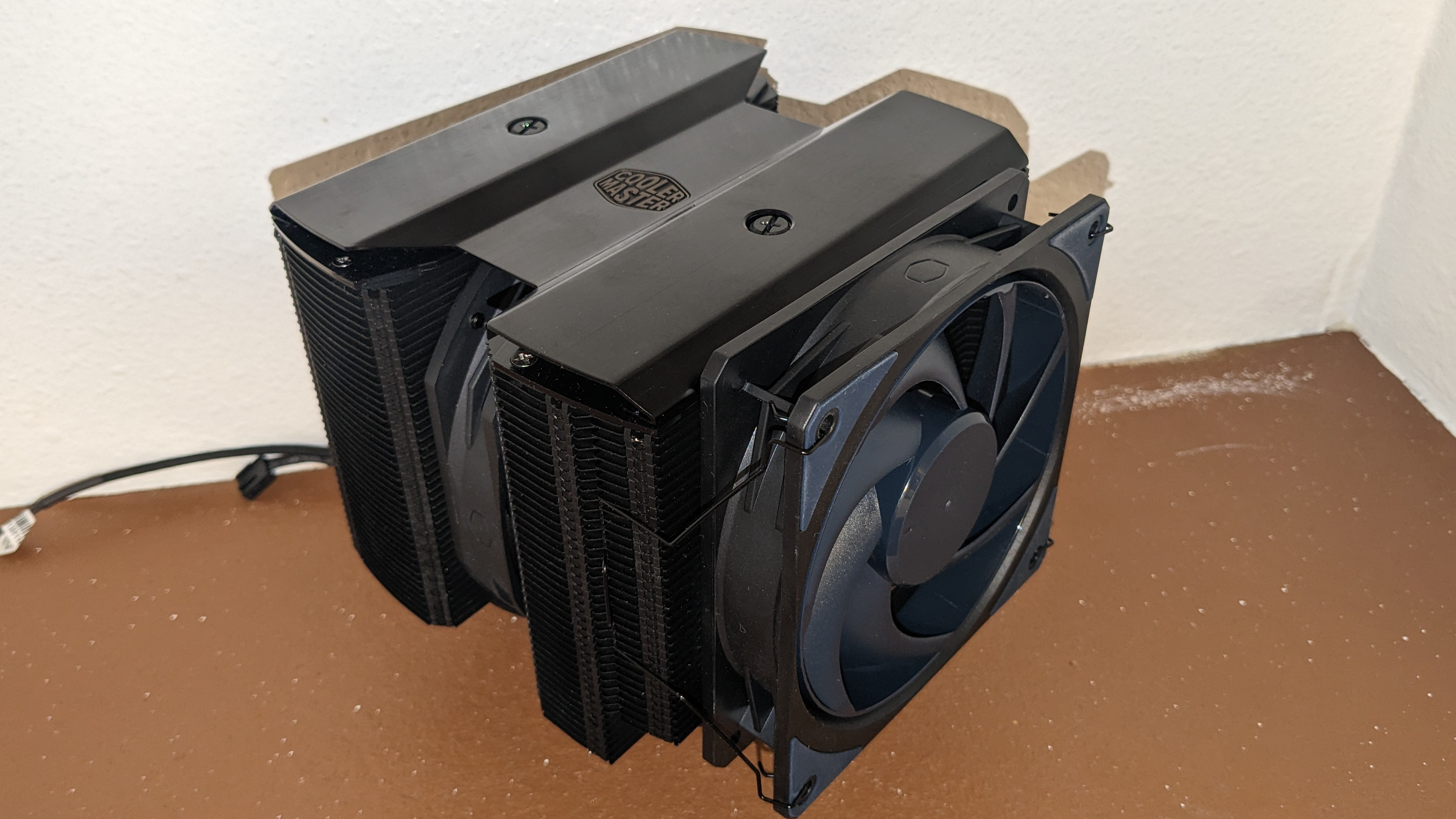
Cooler Specifications
Packing and Included Contents
Cooler Master’s MA824 MasterAir Stealth arrives in a box that’s pretty large for an air cooler, at 8x10x9.5 inches. But of course, this isn’t a small cooler.
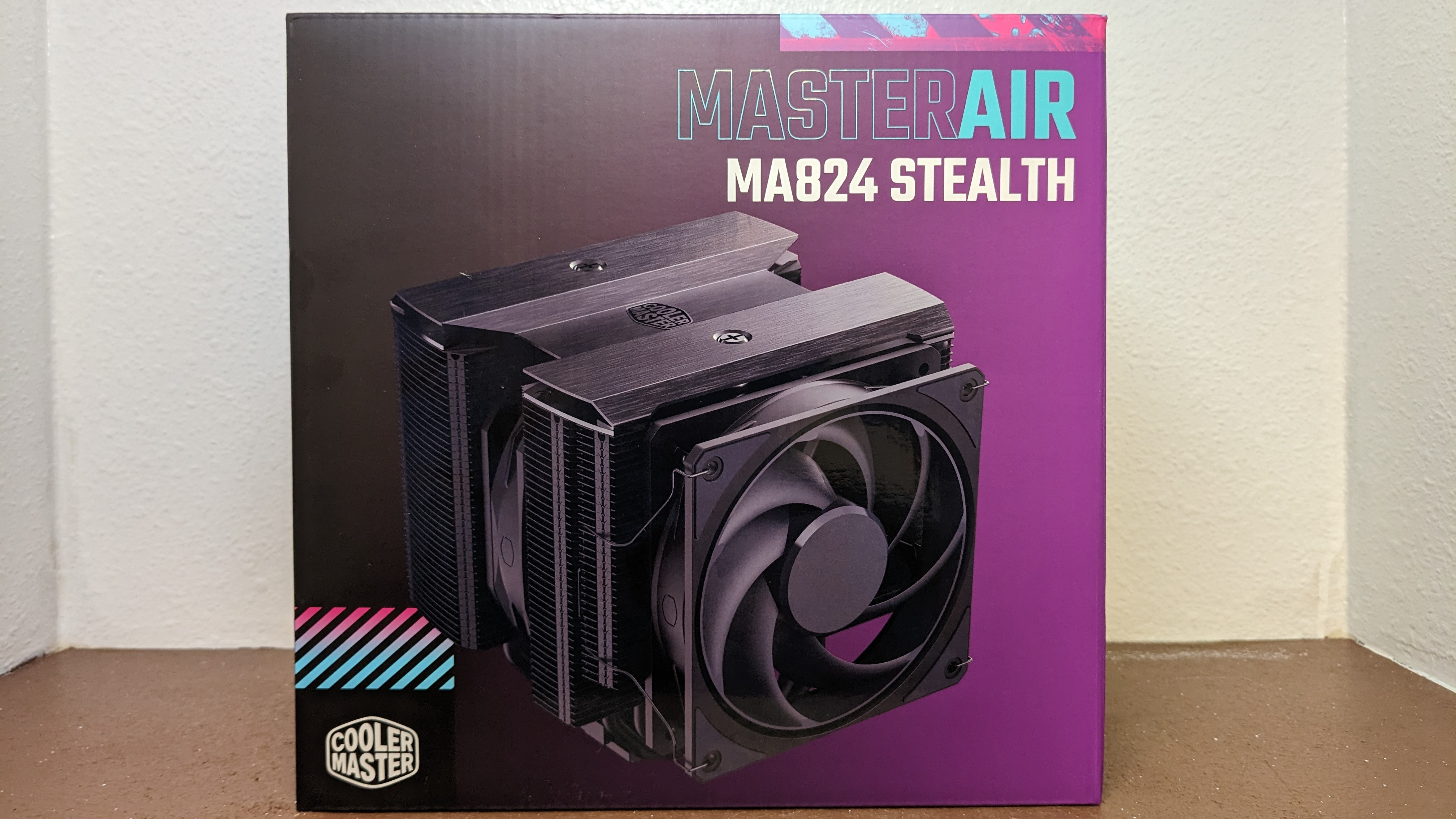
The inner contents are protected with foam, cardboard, and plastic – ensuring the cooler arrives in pristine condition no matter how rough the shipping was.
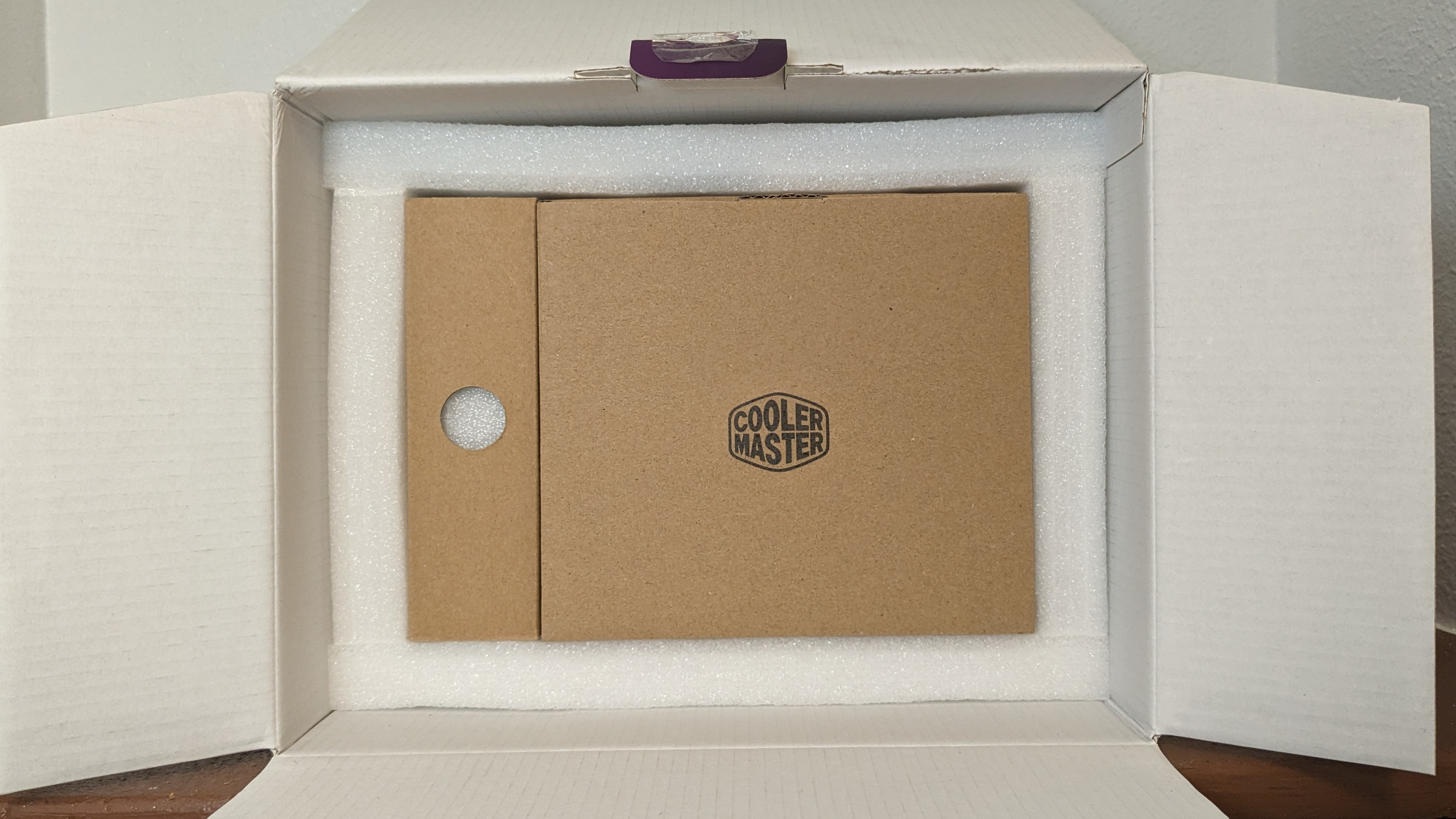
Included with the package are the following:
- Dual-tower heatsink with pre-installed 140mm fan
- 1x 120mm fan
- Fan Clips
- Mounts for all modern CPU sockets (including AM5 and LGA1700)
- PWM splitter cable
- Thermal paste
- Screwdriver
- Manual & Warranty leaflets
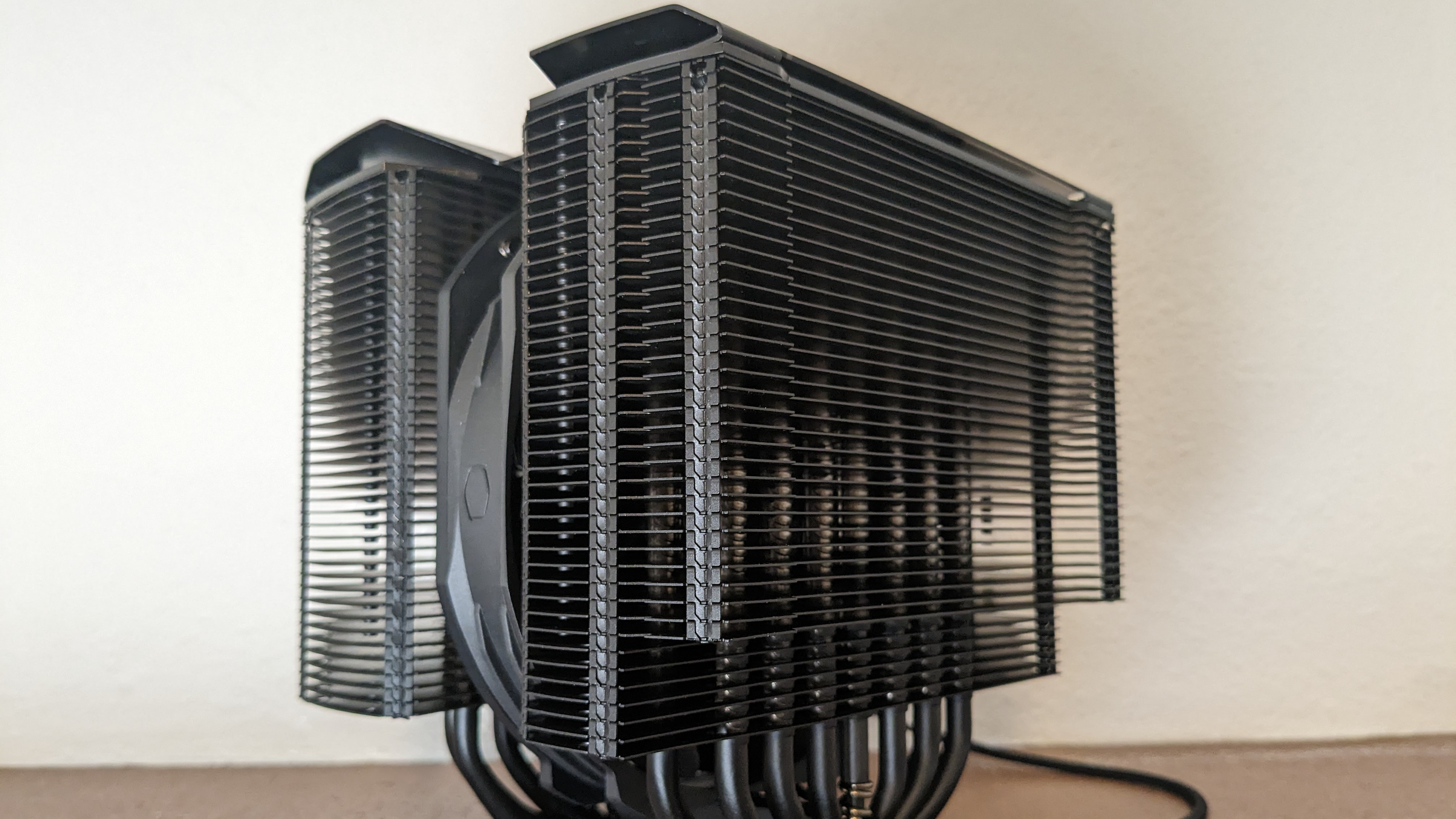
Installation on LGA1700 and AMD AM4 AM5
Cooler Master has clearly prioritized user convenience with the Master Air MA824 Stealth. The installation process has been streamlined to the point that I would consider it one of the easiest coolers to install.
It’s very simple, whether you’re using an AMD Ryzen- or Intel-based motherboard. Users of any and all experience levels should find no difficulty during installation.
First, if you’re running an AMD Ryzen system, you’ll need to start by removing the default retention bracket. Intel users will need to apply the backplate to the motherboard. Next, for either CPU company, secure the mounting standoffs to the motherboard.


Then, place the mounting bars above the mounting standoffs and secure them with the included thumbscrews.

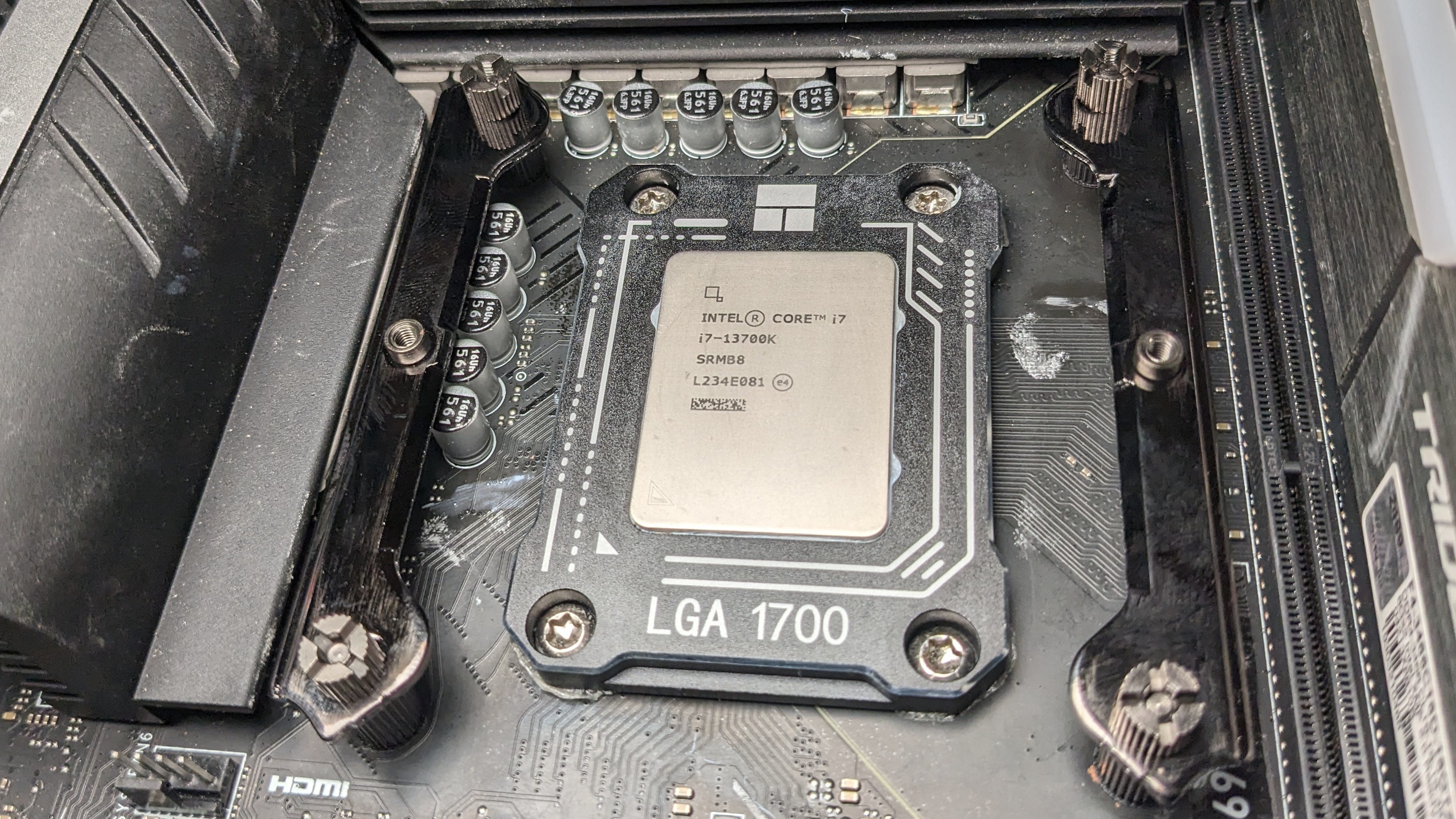
Take the heatsink and press it against the mounting bars, then secure using the screws on top of the cooler.

Lastly, attach the back 120mm Morbius fan using the included clips, and then connect the fans to the motherboard using the included PWM splitter cable.
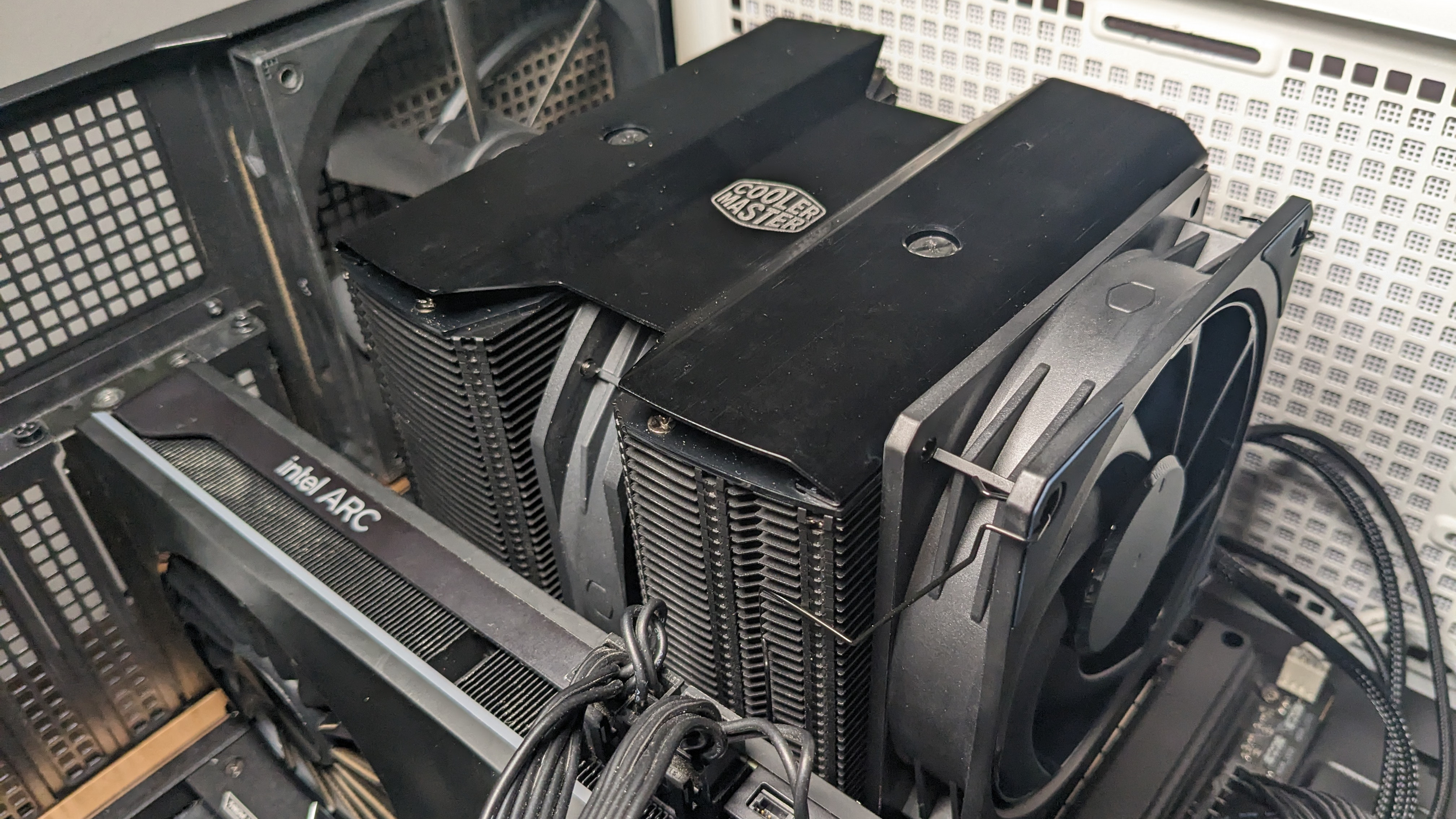
Features of Cooler Master’s MA824 Stealth
⋇ Eight Heatpipes, Pre-Applied thermal paste
Cooler Master’s MA824 Stealth features eight heatpipes, which is the most we’ve ever seen included on an air cooler. But these heatpipes are a little different than those included with other coolers. Most cooling heatpipes are of uniform thickness, but the thickness of the MA824’s heatpipes varies.
The cooler arrives with Cooler Master’s Cryofuse thermal paste pre-installed on the cooler.
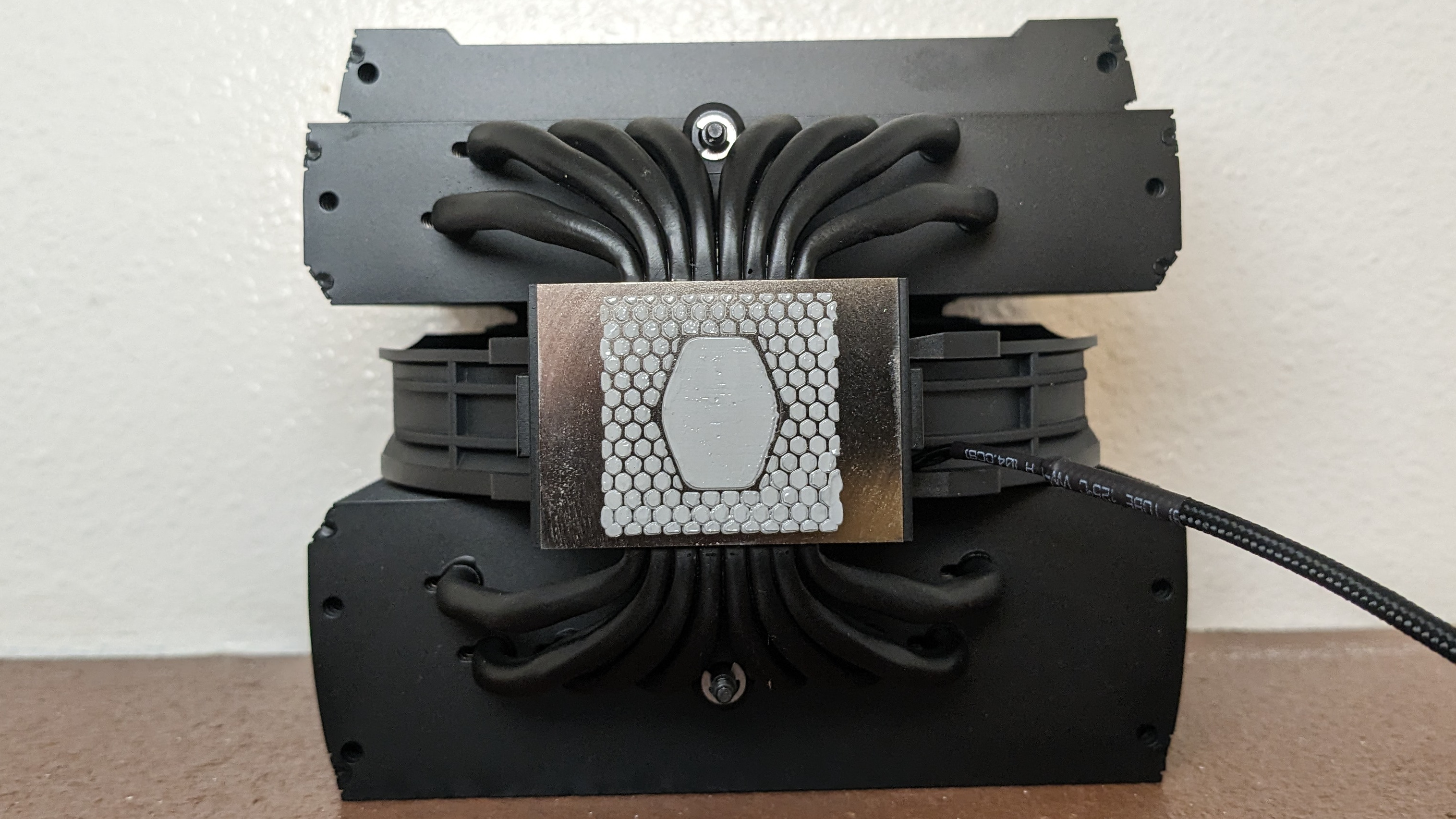
⋇ 42mm RAM Compatibility
The back end of the MA824 is recessed, allowing for 42mm (1.65 inches) of clearance for DDR4 or DDR5 DIMMs.
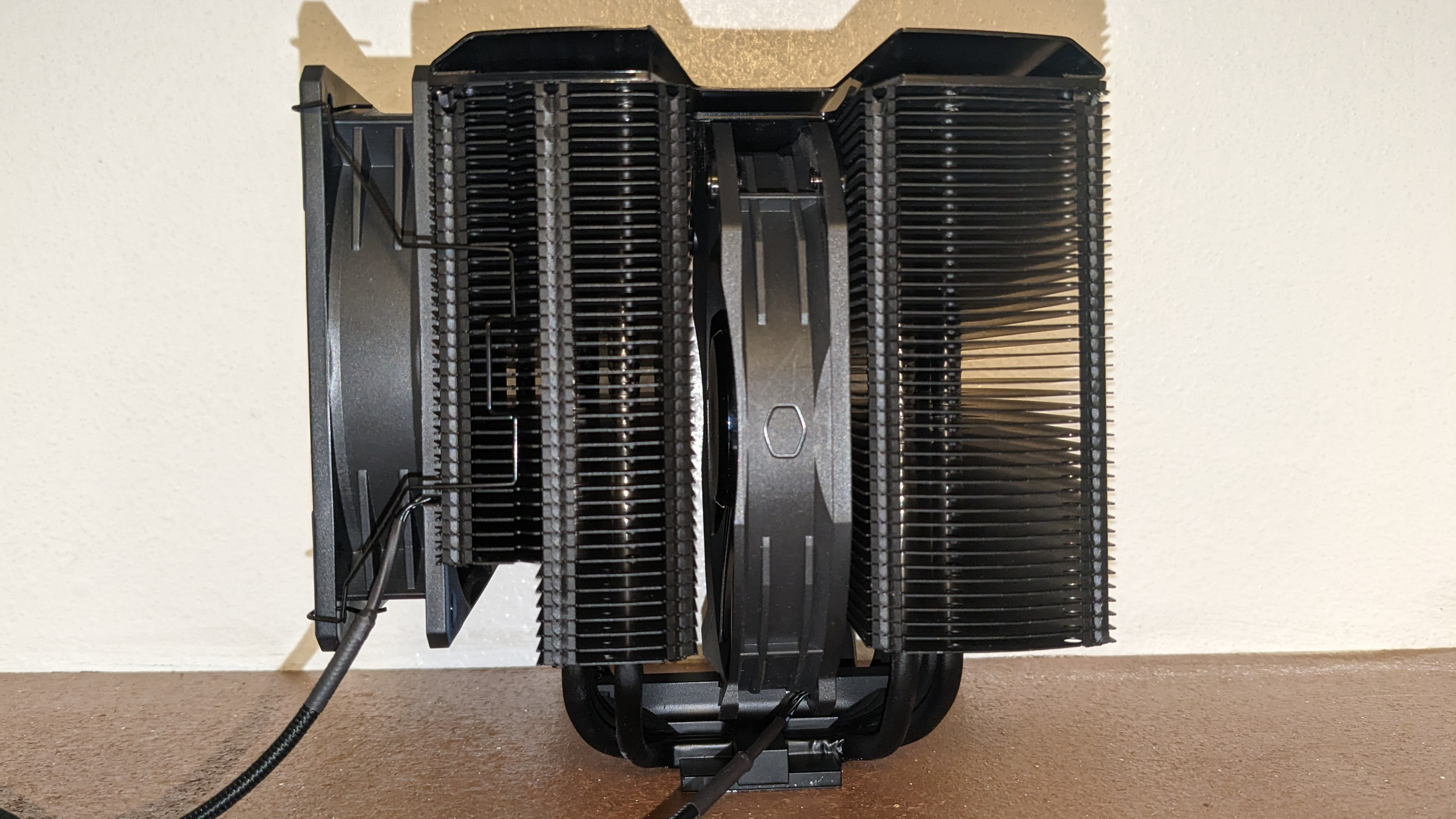
⋇ Full Mini-ITX compatibility
Some high end air coolers won’t fit properly on a Mini-ITX motherboard - but that’s not a problem with Cooler Master’s MA824 Stealth, it fits motherboards both large and small.
⋇ Solid all black “Stealth” design
The MA824 features a solid, all black, “stealth” design with an aluminum top cover and no aRGB lighting.
⋇ Two Morbius fans, 120mm and 140mm
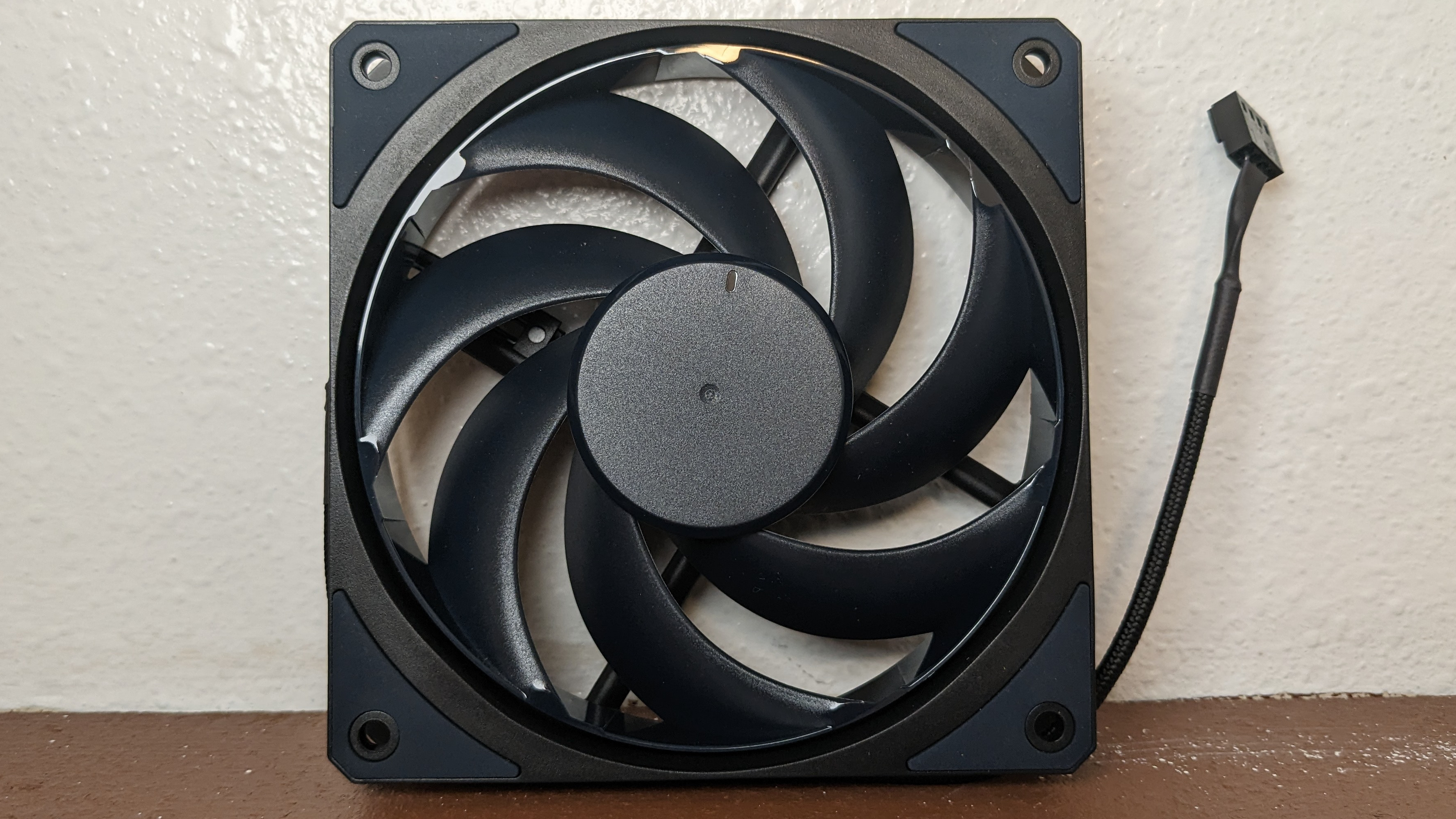
There’s more to a cooler than just the heatsink or radiator. The bundled fans have a significant impact on cooling and noise levels. The MA824 comes with two fans : one pre-installed 140mm that’s not designed to be removed, and one 120mm fan. Both fans are from Cooler Master’s new Morbius lineup, which deliver strong airflow at low noise levels.
Cooler Master advertises the following features with its Morbius lineup of fans:
-
Ring Blade Design (RBD): Interconnecting fan blades designed for a reinforced and rigid structure, eliminating vibration for stable and fluid fan operation.
-
Angled inner frame rim with chambered side vents boost airflow draw, maximizing force induced air pressure and diminishing dead air.
-
Loop Dynamic Bearing: New bearing design utilizes thick oil coating and lubrication to allow for stable performance.
-
Oil Reflow: The oil flows back to the sealed bearing to create constant lubrication against friction and increases the lifespan of the fan.
- Anti-Sway System: a magnetic ring prevents the bearing shaft from tilting, stabilizing the fan to prevent fan blade obstruction under various orientations.
CPUs Used for Testing
Modern CPUs, whether Intel or AMD, are difficult to cool in intensive workloads. In the past reaching 95C+ on a desktop CPU might have been a cause for concern – but with today’s top-end CPUs, this is considered normal operation. Similar behavior has been present in laptops for years due to cooling limitations in tight spaces.
Since last fall, Tom’s Hardware has brought you cooling reviews using one of the most power-hungry desktop CPUs on the market – Intel’s flagship i9-13900K. To give you an idea of what it takes to cool Intel’s behemoth, we’ve tested it with a variety of coolers from basic low-end air coolers like the Amazon Basics CPU cooler to high-end 420mm AIOs such as Corsair’s iCUE H170i Elite.
While it’s nice to see how Intel’s flagship responds to different levels of cooling, those results don’t always correlate with lower-tier CPUs. Today’s review features two CPUs more commonly purchased by end users – AMD’s Ryzen 7 7700X and Intel’s i7-13700K.
LGA1700 Socket Bending
Note that there are many factors other than the CPU cooler that can influence your cooling performance, including the case you use and the fans installed in it. A system's motherboard can also influence this, especially if it suffers from bending, which results in poor cooler contact with the CPU.
To prevent bending from impacting our cooling results, we’ve installed Thermalright’s LGA 1700 contact frame into our testing rig. If your motherboard is affected by bending, your thermal results will be worse than those shown below. Not all motherboards are affected equally by this issue. I tested Raptor Lake CPUs in two motherboards. And while one of them showed significant thermal improvements after installing Thermalright’s LGA1700 contact frame, the other motherboard showed no difference in temperatures whatsoever! Check out our review of the contact frame for more information.
Testing Methodology
All testing is performed at 23 degrees Celsius ambient room temperature. Multiple thermal tests are run on each CPU to test the cooler in a variety of conditions, and acoustic measurements are taken with each result. These tests include:
1. Noise-normalized testing at low noise levels
2. “Out of the box”/Default Configuration Thermal & Acoustics Testing
a.) This means no power limits on Intel’s i7-13700K, and AMD’s default power limits on AMD’s Ryzen 7 7700X.
b.) Because CPUs hit Tjmax in this scenario, the best way to compare cooling strength is by recording the total CPU package power consumption.
3. Thermal & Acoustics testing in Power Limited Scenarios
a.) With Ryzen 7 7700X, I’ve tested with limits of 95W and 75W enforced.
b.) On Intel’s i7-13700K, I’ve tested with limits of 175W and 125W enforced.
The thermal results included are for 10-minute testing runs. To be sure that was sufficiently long to tax the cooler, we tested both Thermalright’s Assassin X 120 R SE and DeepCool’s LT720 with a 30-minute Cinebench test with Intel’s i9-13900K for both 10 minutes and 30 minutes. The results didn’t change much at all with the longer test: The average clock speeds maintained dropped by 29 MHz on DeepCool’s LT720 and 31 MHz on Thermalright’s Assassin X 120 R SE. That’s an incredibly small 0.6% difference in clock speeds maintained, a margin of error difference that tells us that the 10-minute tests are indeed long enough to properly test the coolers.
Thermal results with noise normalized to 38.2 dBA
Finding the right balance between fan noise levels and cooling performance is important. While running fans at full speed can improve cooling capacity to some extent, the benefits are limited and many users prefer a quiet system.
In this test where the fans are normalized for quiet operation, Cooler Master’s MA824 exhibited the best performance we’ve seen yet, surpassing the competing Noctua NH-D15S by four watts. This isn’t a massive victory, but it is a victory nonetheless and very impressive for an air cooler.

No Power Limits Thermal Results
If you don’t have power limits enforced on Intel’s i7-13700K, it will hit TJMax (peak CPU temperature) and thermally throttle with even the strongest of air coolers. In this test, we measure the total amount of watts the cooler is able to dissipate from the CPU.

Cooler Master’s MA824 Stealth matched the cooling performance of Noctua’s NH-D15S precisely, with an average of 233W cooled during testing. What’s especially impressive is that it maintains this level of cooling performance while running quieter than Noctua’s NH-D15S, at only 41.9 dBA.

175W Cinebench Results
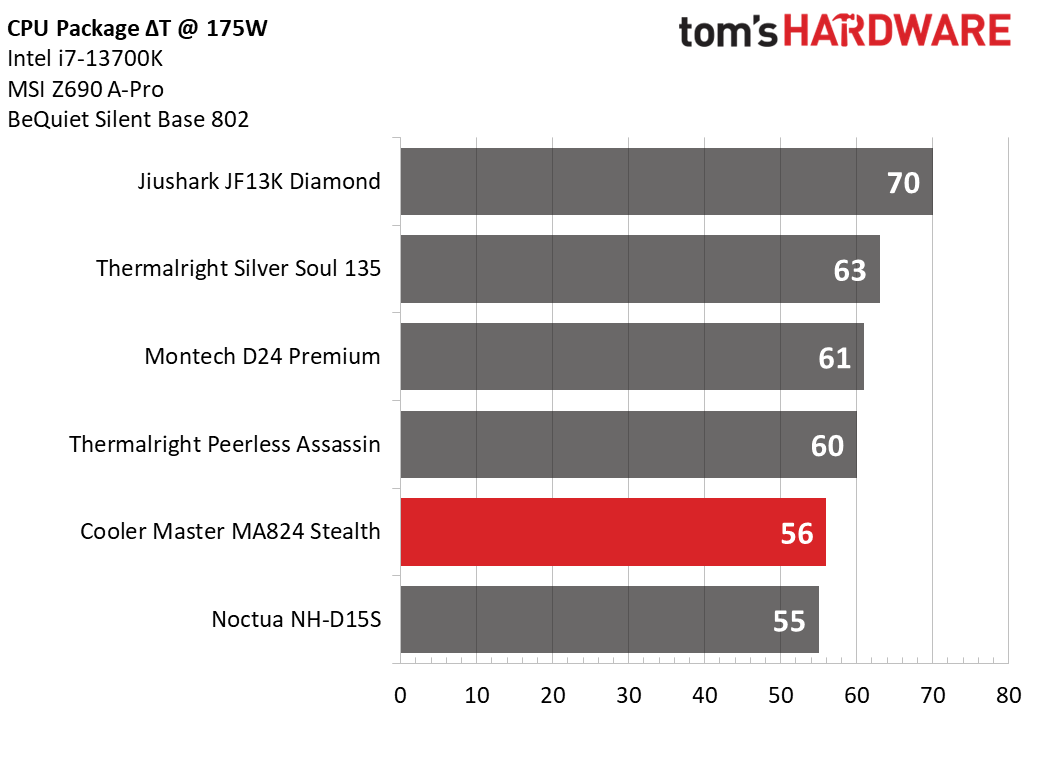
Most coolers on the market are able to keep Intel’s i7-13700K under its peak temperature if the power consumption is limited, so for this test we’ll be looking at the CPU’s actual temperature.
With this slightly restricted workload, CoolerMaster’s MA824 Stealth technically falls behind the Noctua NH-D15S – running a single degree hotter. This performance is achieved with a slightly lower noise level though – 40.9 vs 41.4 dBA – so I’d consider this to be a draw between the NH-D15S and the MA824.
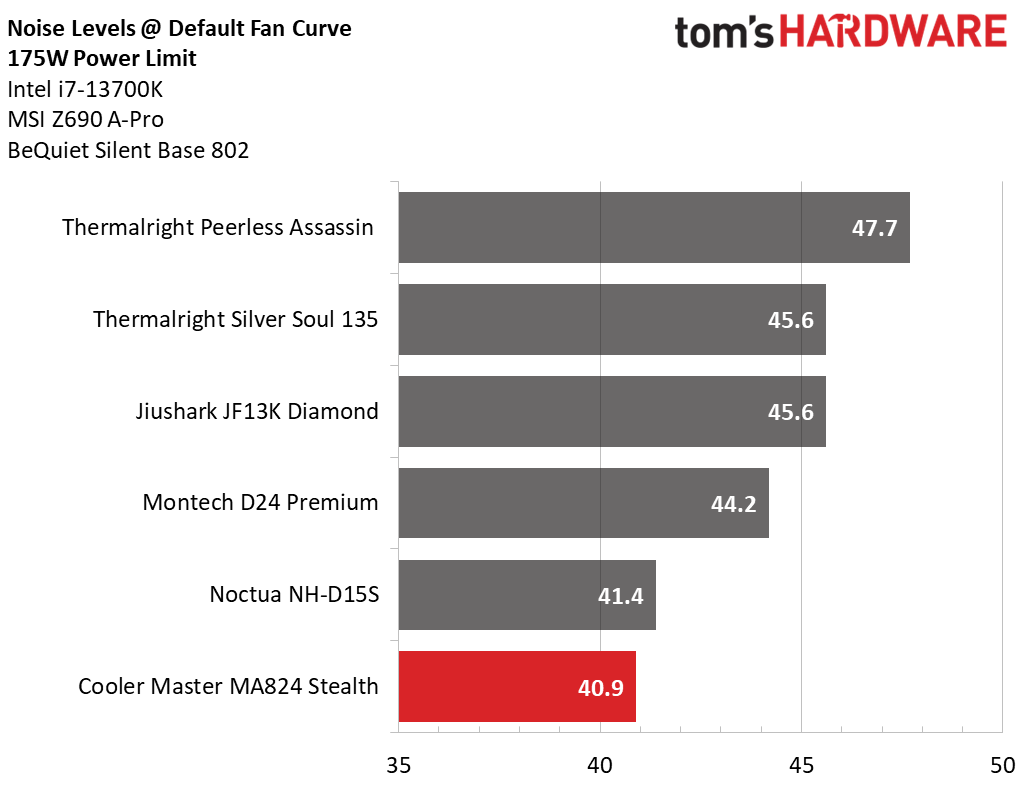
125W Cinebench Results
The lowest power limit I test with Raptor Lake CPUs is 125W. This is a high enough limit to allow the CPU to maintain its base clock speeds even in the most intensive tests, and most coolers should be able of keeping the CPU below Tjmax here – even low-end coolers.

It’s no surprise that the MA824 delivers chart-topping results in this TDP-restricted scenario. In this test, it matches the cooling performance and noise levels of Noctua’s NH-D15S precisely, with noise levels of 38.2 dBA and a CPU temperature of 44 degrees over ambient.
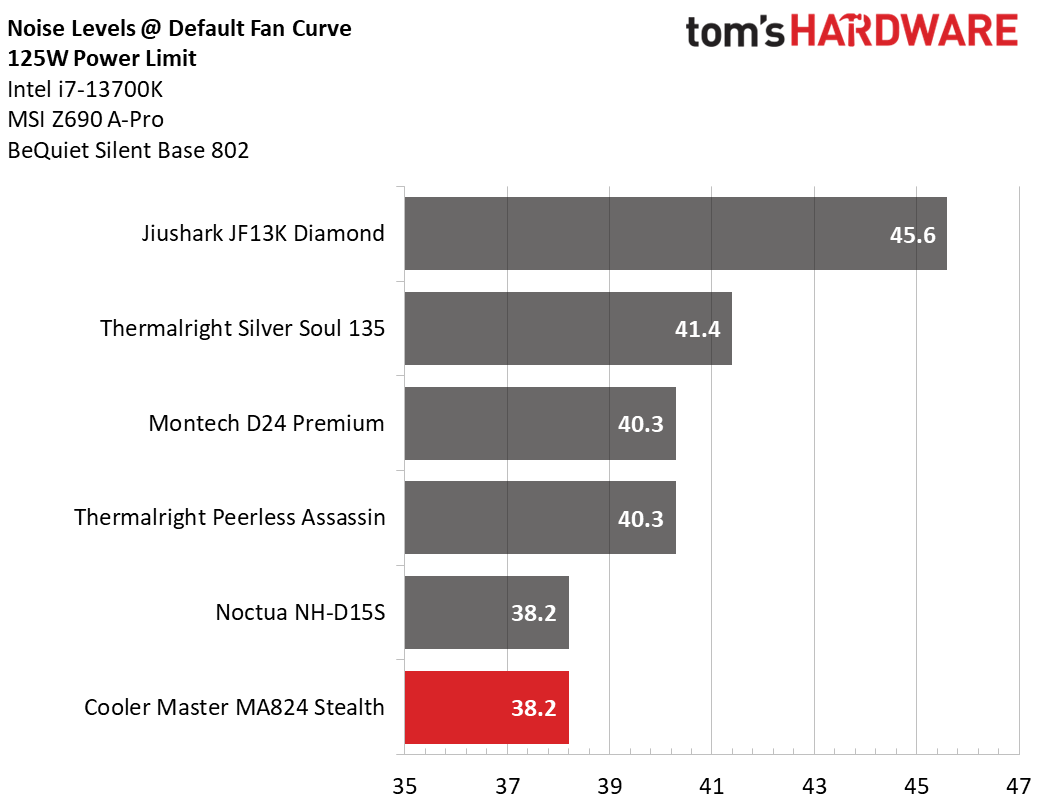
AMD Ryzen 7 7700X Thermal Results
It’s great to see how coolers perform with hotter CPUs like Intel’s i7-13700K, but that performance doesn’t always directly translate to how other CPUs will operate with the same coolers. With today’s review, I’ve expanded my testing to include AMD’s Ryzen 7 7700X to show how coolers might respond with CPUs that are less thermally demanding.
Thermal Results with noise normalized to 36.4 dBA
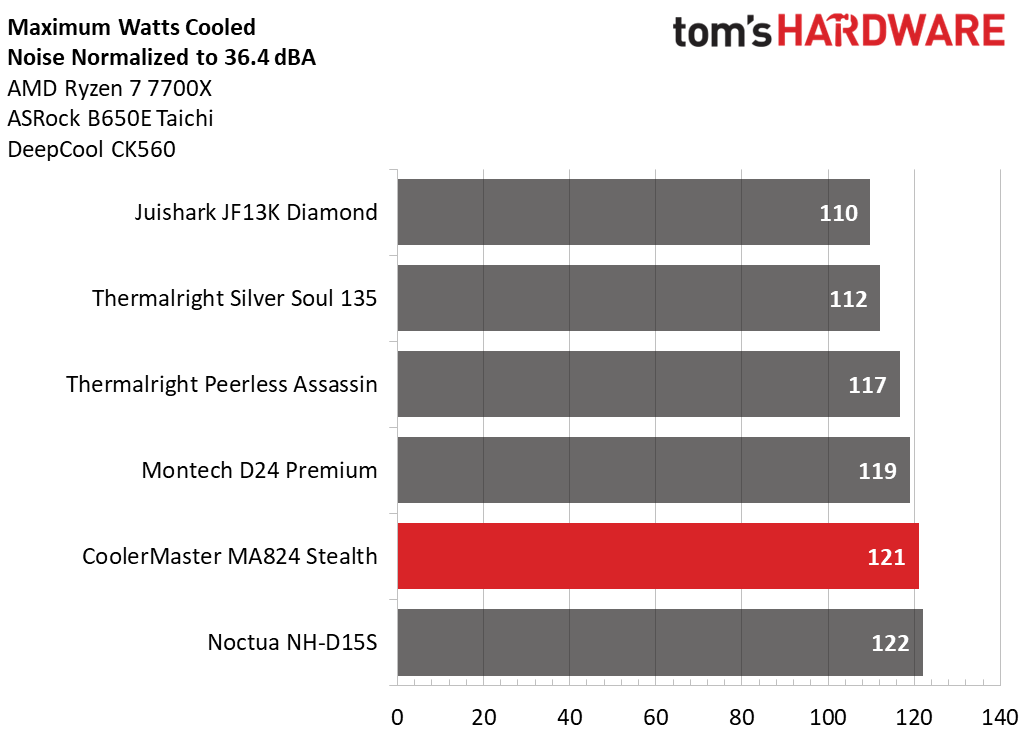
With noise levels set to 36.4 dBA, Cooler Master’s MA824 Stealth does very well when paired with Ryzen 7 7700X – cooling 121W on average during testing. This is technically a single watt behind Noctua’s NH-D15S, but we would consider this with the margin of error.
Maximum Cooling Capacity with maximum fan speeds
Our next test is to test the cooler’s maximum cooling capacity by allowing its fans to run at full speed. The Cooler Master wasn’t able to match the NH-D15S in this test, falling behind by 3W. This is a minor defeat, which won’t make any perceptible impact in actual computing performance, but it is a loss nonetheless.

While it does run a few watts behind the competition in total cooling capacity, teh MA824 Stealth also runs quieter at only 41.9 dBA vs the 43.4 dBA of Noctua’s NH-D15S. Overall, I would consider this a small win for Cooler Master’s MA824.
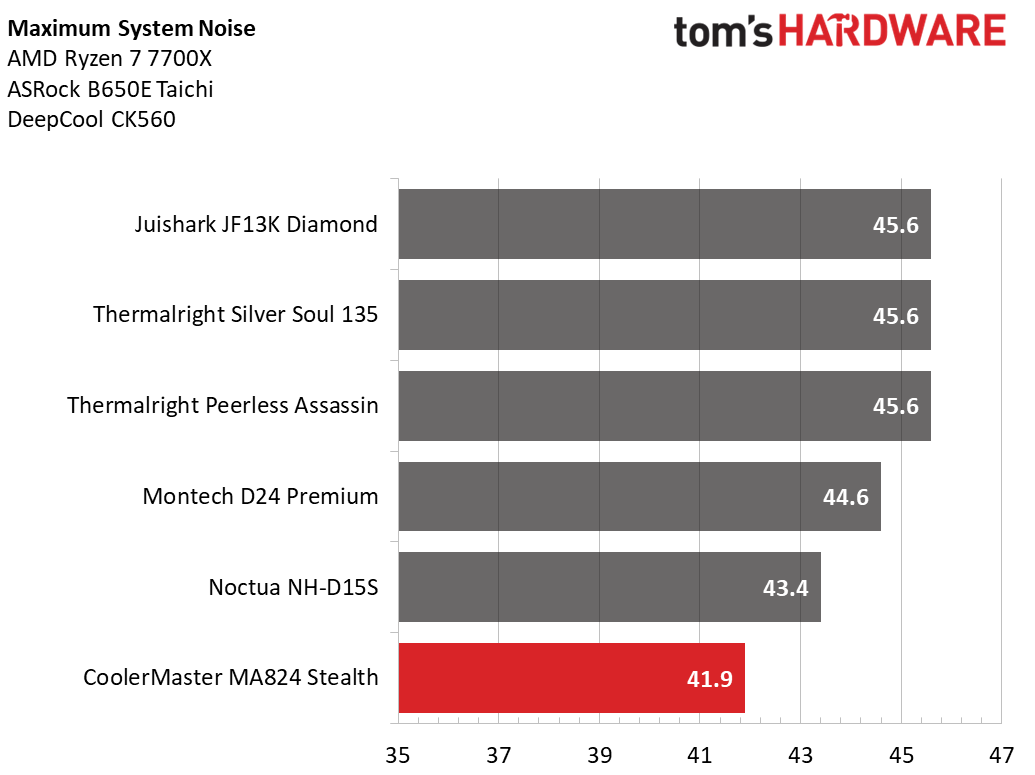
Thermals and Acoustics with a 95W Power Limit
Not every task will force the CPU to use its full potential or maximum power draw, so it’s good to test coolers at a variety of power limits. With an average CPU temperature of 53C over ambient, Cooler Master’s MA824 Stealth does well here.

While technically falling behind the competing Noctua and Montech coolers by a single degree in this scenario, the Stealth runs much quieter than these coolers do, at only 38.2 dBA. That’s a win in my book.

Thermals and Acoustics with a 75W Power Limit
With power draw reduced to 75W on AMD’s Ryzen 7 7700X, this thermal load shouldn’t be difficult for most coolers to handle. This is roughly the amount of power the Ryzen 7 7700X CPU will use during gaming, and it’s also the maximum power consumption of AMD’s non-X Ryzen 7 CPU.

At this lower level of power consumption, cooling difficulty isn’t hard at all and even the most basic coolers should have no problems here. Cooler Master’s excellent performance here is of no surprise, but its supremely quiet noise levels of only 35.4 dBA were unexpected.
Truthfully, the noise levels of the MA824 might be quieter than 35.4 dBA, because my sound meter is incapable of measuring below that lvel. This is a very good result, the quietest I’ve recorded yet.
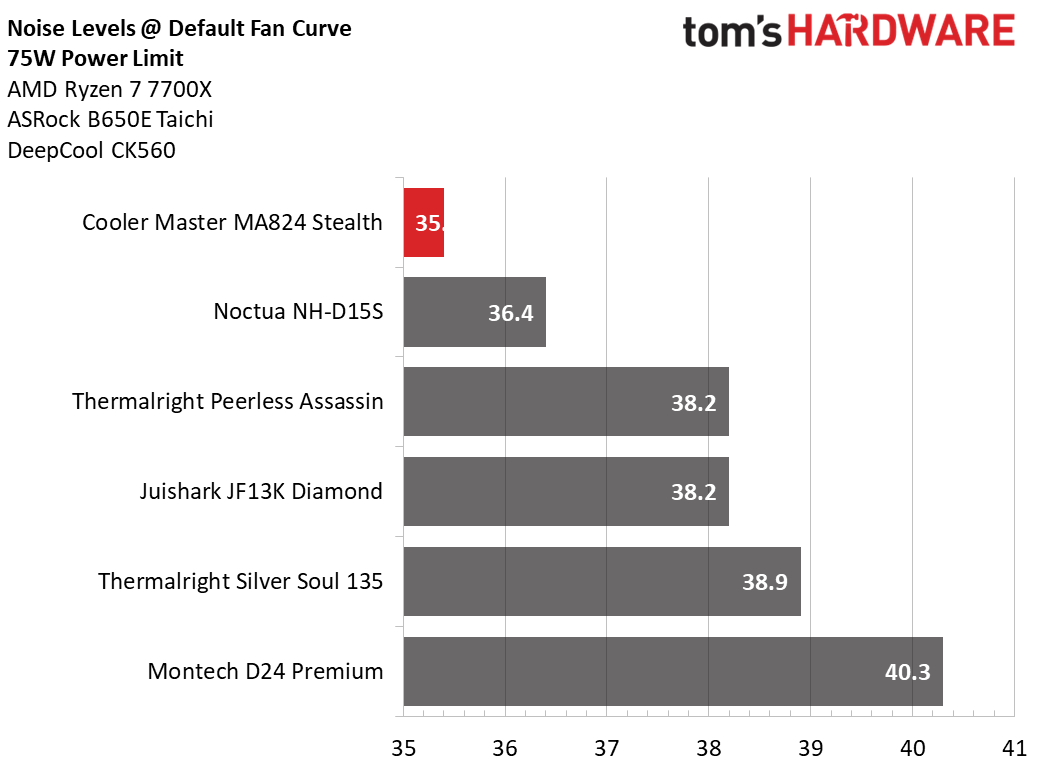
Conclusion
Cooler Master aimed to create an air cooling champion with the MasterAir MA824 Stealth, and the company certainly achieved its goals. The MA824 Stealth provides supreme cooling performance while running quieter than its direct competitor, Noctua’s NH-D15S. If you can afford its $99 price, you won’t have any regrets if choosing Cooler Master’s MA824 Stealth. It’s a great pairing for any modern Intel or AMD processor.







